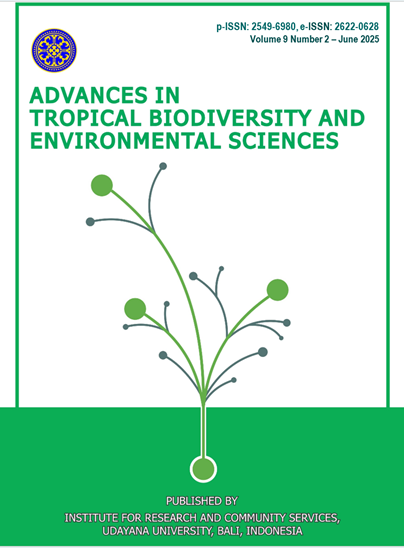Morphological and Anatomical Development of True Mangrove Species Generative Organs in Ngurah Rai Forest Park, Bali
DOI:
https://doi.org/10.24843/ATBES.2025.v09.i02.p08Keywords:
Development, Generative organs, Tissue differentiation, Fertilization, FloweringAbstract
Plant phenology is the study of the growth time of plants that occurs repeatedly every year. In the process, growth is accompanied by development at both the cellular and tissue levels of differentiated plants, resulting in the formation of organs with specific functions as a form of environmental adaptation. The lack of mangrove reproduction data motivates this study to investigate the development and differentiation of generative organs in several species of true mangroves within Ngurah Rai Forest Park. Sampling was conducted in the Ngurah Rai Forest Park, while observations were made in the Plant Structure and Development Laboratory at Udayana University. The research method involved observing and comparing changes in the morphological and anatomical structures of the species Avicennia marina, Sonneratia alba, and Xylocarpus granatum. The results found that all species have all the flower’s main parts (stamen, pistil, petal, sepal), with some species having nectar around the receptacle to attract pollinators. The fruit development in X. granatum formed without any of the flower parts, while in S. alba, it clearly involves the calyx and stylus as its main parts of fruit, and A. marina only has a small calyx as part of the fruit. Based on the sprout characteristics, S. alba and X. granatum are classified as normal fruits, while A. marina has cryptoviviparous fruit. As for seeds, the endospermic seed was observed in S. alba and X. granatum, while A. marina has a non-endospermic seed with fully developed cotyledons.
Downloads
Published
How to Cite
License
Copyright (c) 2025 Advances in Tropical Biodiversity and Environmental Sciences

This work is licensed under a Creative Commons Attribution-ShareAlike 4.0 International License.










